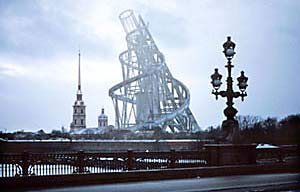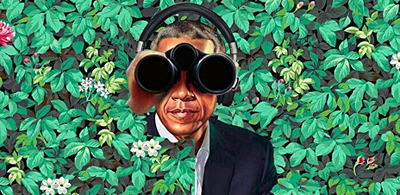Modernism: Designing A New World
Modernism: Designing A New World, 1914-1939, now showing at the Corcoran Gallery of Art in Washington, D.C., until July 29, 2007, was initially planned and exhibited by London’s Victoria and Albert Museum. At the time of its premiere in the U.K., I wrote a short article in praise of the exhibition, but now that the show has reached the U.S., I’d like to once again recommend – not just the exhibit – but a reconsideration of modernism.
The modernist vision began to emerge during the late 19th century, with “modernism” serving as a catchphrase for an aesthetic philosophy that encompassed visual art, music, architecture, literature and other artistic disciplines. Traditionalists credit modernism as responsible for the demise of “real art,” while today’s so-called postmodernists dismiss the same movement for being hopelessly old-fashioned. “Modernism didn’t work” is a refrain often heard from postmodernists and their supporters – but that opinion is in every respect, incorrect. For instance – where was the failure in Picasso’s startling 1907 painting, Les Demoiselles d’Avignon? What didn’t work in Igor Stravinsky’s 1912 composition, Le Sacre de Printemps? Exactly how were the novels of Franz Kafka unsuccessful?
Associated Press writer Brett Zongker wrote about the show and briefly interviewed Christopher Wilk, the original curator of the exhibit for the Victoria and Albert Museum, as well as interviewing Corcoran director and president, Paul Greenhalgh. Wilk and Greenhalgh both made salient points on the relevancy of modernism in today’s context. When speaking of those early modernist firebrands who wanted to “reinvent the world,” Wilk noted that “This was a younger generation who looked to the old men, essentially, who had led them into war, into a slaughter. They wanted to ditch the past and start all over again completely.”
Corcoran director Greenhalgh drew a similar connection between the times lived through by the early modernists, and the “current global environment and the very troubled world that we’re living in.” He went on to say that, “There’s a big debate now internationally about what is art for,” modernists, he declared, attempted to “transform people’s lives for the better. They didn’t think it was just about making nice things and selling them for a lot of money.”
The crucial statements made by Wilk and Greenhalgh point not so much to artists of the past as they do to artists in the present, and the two seem to grasp, more than most contemporary artists, the essential character of modernism and its core motivating force – the desire to reform or revolutionize society. In a Reuters review of Designing A New World, reporter Randall Mikkelsen wrote: “Greenhalgh quoted art critic Robert Hughes as saying contemporary art was only interested in money, and he hoped the Modernism show would be a reminder of a time when a desire for social improvement drove artists. ‘It seems to me that’s the contemporary debate we should all be having now,’ he said.”
While the Designing A New World exhibit displays a wide range of modernist artistic production, from painting and furniture to automobile design and fashion, a chance to see the room-sized model of Vladimir Tatlin’s 1920 Monument to the Third International is by itself worth the price of admission. Considered the ultimate expression of constructivist architecture, the Soviet artist’s monument to international communism was meant to dwarf the Eiffel Tower in Paris. Had it actually been constructed, the tower of iron, glass and steel would have stood over 100 stories tall.

Curator Christopher Wilk correctly observed that “Modernism is all around us today – this is our world. This is the world we live in.” To my mind, modernism isn’t defunct or irrelevant at all, it has simply arrived at a difficult impasse, and what is currently referred to as “postmodern” is in actuality nothing more than late modernism. A reawakening of the modernist spirit in the 21st century could be called “Remodernism” – but that’s another essay.




